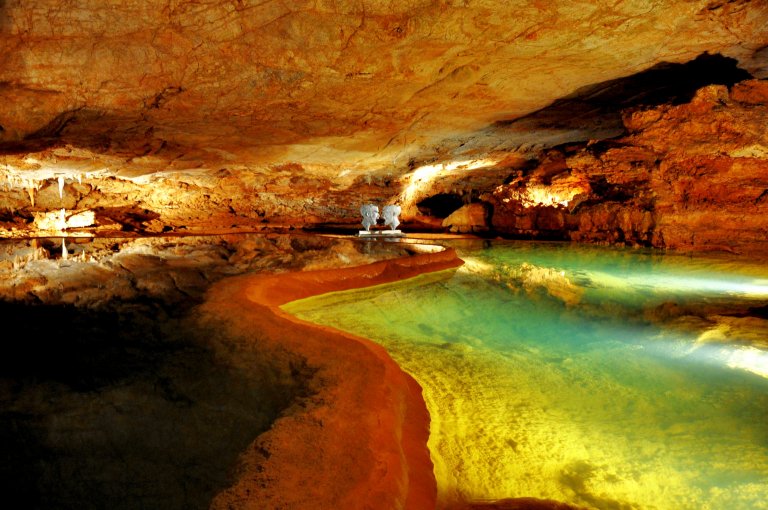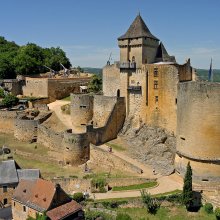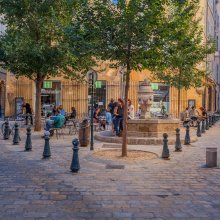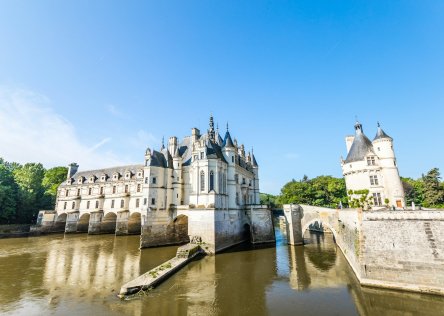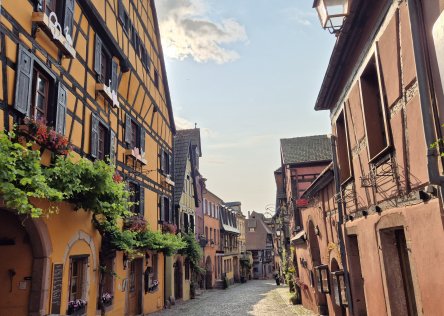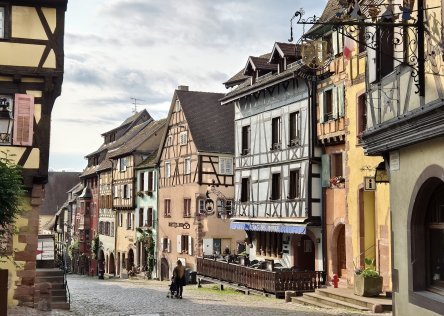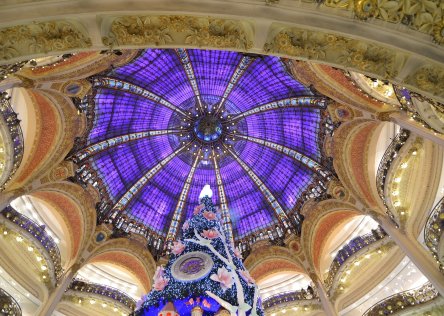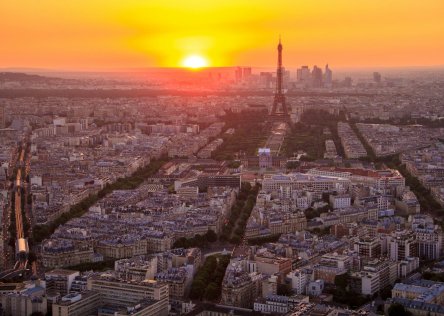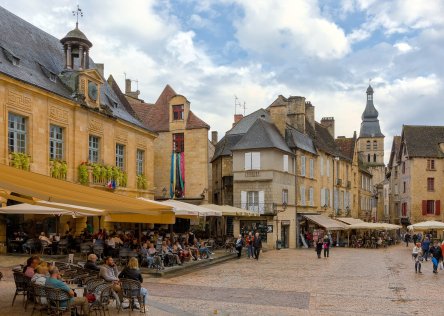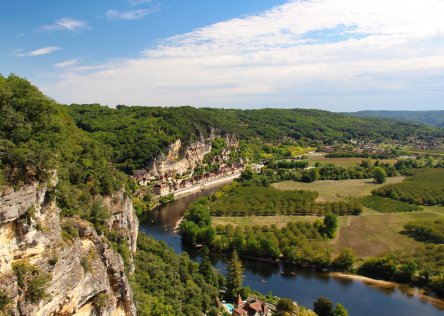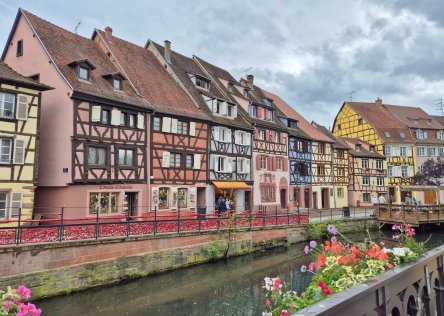For travelers who are interested in geology, caves and prehistoric art, there are many prehistoric caves in France that are worth visiting. Some are the original caves and some are replicas - but both types are worth visiting. Here we list some of our favorite caves in France, any of which we can try to include in your itinerary. All of the below are located in the Dordogne and Lot regions of southwestern France, except for the Chauvet cave, which is in Provence.
We can include visits to some of these prehistoric caves when you book one of our Dordogne tours
Lascaux Cave
Of all the prehistoric caves in France, this is one of the most famous. Discovered on 8th September 1940 by 18-year-old Marcel Ravidat as he was out walking his dog, the ‘sistine chapel of prehistory’ Lascaux cave contained detailed cave art depictions of a wounded man, galloping horses, incensed bulls, and deer.
Unfortunately, the cave had to be closed to the public in 1963 due to damage being caused to the paintings by the moisture and carbon dioxide in the breath of more than daily 1,200 visitors.
To get a sense of what it is like inside the Lascaux cave, visitors may be interested in seeing the International Center for Cave Art (also known as Lascaux 4), a full-scale and high-tech reproduction of the Lascaux cave.
Around 50 artists and sculptors spent three and a half years reproducing 600 animal images and 400 symbols. To add an air of authenticity, Lascaux 4 also has the same temperature, air pressure, smell of damp and sounds as the original cave.
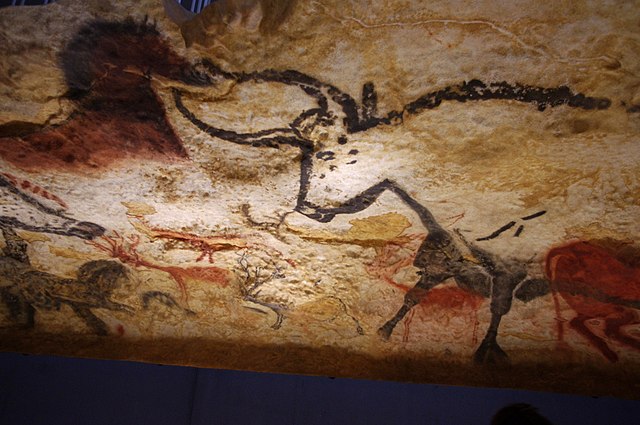
Cave art replica at Lascaux IV© Traumrune / Wikimedia Commons / CC BY-SA 3.0
Font-de-Gaume Cave
Another of Dordogne’s enchanting caves, Font-de-Gaume is the only original cave in France containing polychrome cave paintings that is still open to the public (at the time of writing). These were the first cave paintings to be discovered in Perigord Province, back in the 19th century.
The rock art dates back around 17,000 years to the Upper Paleolithic Magdalenian period. It is likely that the cave was inhabited by European early modern humans (EEMH) also sometimes referred to as Cro-Magnon. The paintings and engravings on the cave walls include bison, horses and mammoths.
The number of people allowed to enter the cave each day is limited, to protect the paintings from damage. It is therefore advisable to arrive at the cave very early to buy your tickets on the day you wish to visit.
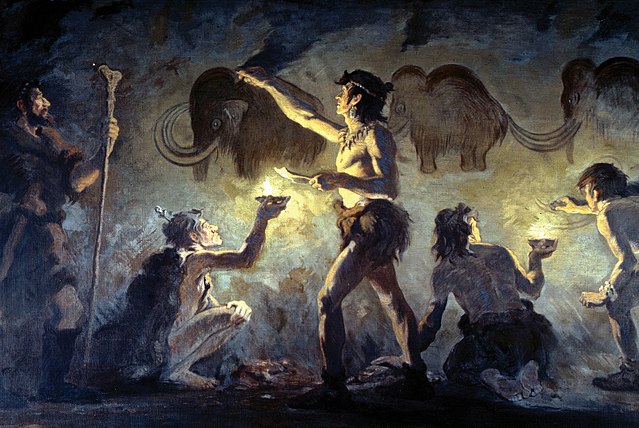
Depiction of our ancestors painting in the Font de Gaume cave (Wikimedia Commons CC0)
Combarelles Cave
The Combarelles cave is just a 20-minute walk or 2-minute drive from Font-de-Gaume. There aren’t any paintings in this cave but you’ll find more than 600 engravings of animals and symbols that date back around 12,000 years. This cave might make you feel like Indiana Jones as you venture deeper into the nearly 1,000 feet long cave with an average cave width of just over 3ft! This is certainly not for the claustrophobic!
If you’re unable to get tickets on the day for Font-de-Gaume or feel apprehensive about the confined cave of Combarelles, the Lascaux 4 replica is a good option, at just half an hour’s drive away from these two prehistoric sites.
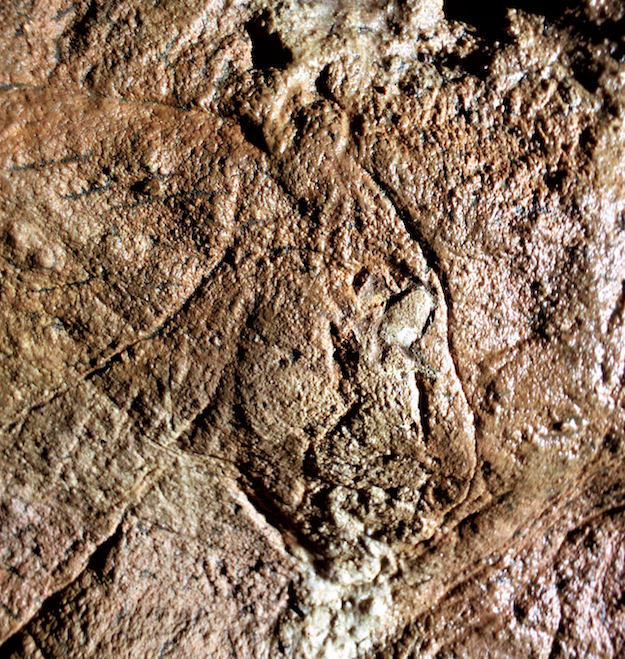
A prehistoric engraving of a horse in the Combarelles cave (Heinrich Wendel (© The Wendel Collection, Neanderthal Museum))
Chauvet Cave
The Chauvet cave, also called the Decorated Cave of Pont d'Arc, was discovered by three cavers in 1994. It has never been open to the public, following the lessons learned from Lascaux. In this case, visitors may also visit the stadium-sized replica of the cave.
This has been recreated inside a concrete hanger on a hill a few miles from the original. Hi-tech scanning techniques, 3D-modelling and digital images of the original cave helped to reproduce the limestone walls out of concrete, the stalagmites and stalactites out of resin, and the paintings, which were recreated offsite by specialist artists, using digital images of the originals projected onto canvases of imitation rock.
There tends to be mixed feelings about replica caves such as Lascaux IV and the Chauvet cave. Some have argued that replicas can never compare to seeing the original - who would choose to see a replica Monet, after all?
-
Preserving French Heritage
But it’s important to remember that if the Ministry of Culture allowed thousands of tourists a day to visit these prehistoric caves indefinitely, the moisture and CO2 from human breath, and the resulting bacteria and fungi growth would inflict irreversible damage on the paintings, as it is feared is the case at the original Lascaux cave. In this case, replicas would, sooner or later, be the only way to gain some idea of the caves’ past magnificence.
Replicas therefore allow countries to conserve their heritage whilst still allowing the public to gain an insight into their past.
More than 400 animals are painted in the original Chauvet cave, with radiocarbon dating suggested that these dated back 35,000 years. This makes it the oldest collection of prehistoric art in France.
Palaeolithic art specialist Jean Clottes was the first scientist to enter the Chauvet cave, and has been president of the replica's scientific committee. Clottes told the BBC that a replica was the best way for as many people as possible to learn about our prehistoric ancestors.
"They are not primitive people, they are people like us," he explained to the BBC. "Modern humans are 200,000 years old, at least, so 35,000 years ago was not such a long distance away... (They) had short lives that were quite different from ours, but from their art, we can see they were as intelligent as we are, that they had great artists and they had religion. They were close to us."
While we agree that it doesn’t feel the same to visit a replica - which is why we highly recommend a visit to the original Font-de-Gaume cave - we also believe that this type of replica is the best way to give people a sense of what it’s like to be in the caves, in replica conditions, surrounded by copies of some of the greatest examples of cave art in the world.
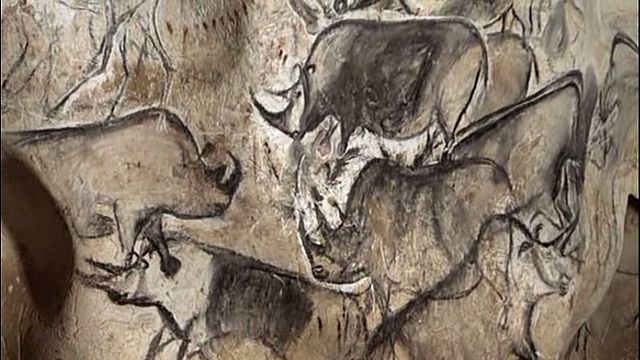
Cave paintings of rhinos in the Chauvet cave (CC0)
Cougnac Caves
Prehistory buffs will delight in the gorgeous geological formations and prehistoric cave paintings in the Cougnac caves. Discovered in 1949 and 1952, the two caves at Cougnac have been open to the public for nearly 70 years.
Dating back 30,000 years, the cave art features some of the oldest original cave paintings in France still accessible to the public. The cave art motifs include ibex, mammoth, the extinct megaloceros (deer), and two very rare depictions of a 'wounded man', with what are thought to be spears piercing his body.
This is a popular site for local school trips, so if you prefer to avoid the groups of children, you may visit the caves in the afternoon.
The guided tours begin with the geological tour of the first cave, where visitors will marvel at one of the loveliest cave roofs in France. The second part of the tour takes in the archeological aspect of the second cave, focusing on the cave art. In total the tour of both caves takes about an hour.
Pech Merle Cave
Like the other caves we've mentioned, the Pech Merle cave remained concealed and untouched for thousands of years before it was discovered in 1922 by three local children. This vast cave (over a mile long with large caverns) in the Lot region of southwestern France presents visitors with nearly 800 astonishing images and engravings dating back nearly 30,000 years.
Depictions include the stunning and unique spotted horses, 28 examples of the mammoth, as well as bison and aurochs (the ancestor of domestic cattle). There is also a realistic engraving representing a bear, which would have been done with a tool made of flint stone.
To encounter representations of such creatures, many of which are now extinct, seeing them through the eyes of our ancestors who lived on the Earth many millennia before us can be quite a moving experience.
An exploration of Pech Merle and the other caves is not just about seeing the world as prehistoric humans saw it. It's also about feeling it, breathing in the damp smell of the subterranean surroundings, listening to the sound of water dripping and imagining what it was to be confronted with dense darkness, with only torches of fire to light the way through the caves.
Visitors are guided through the caves in groups of 25 (max) and the tour lasts an hour.
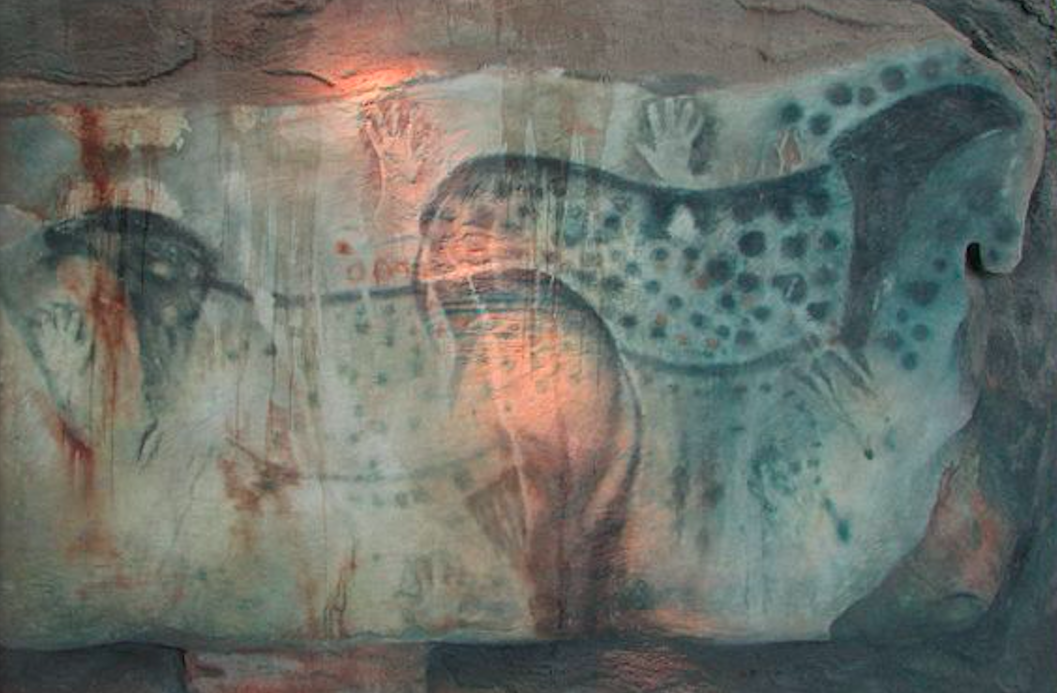
A replica of the spotted horses paintings at the Pech Merle cave. Travelers can visit these caves and see the real thing
(HTO, Kersti Nebelsiek (CC0))
Rouffignac Cave
In the Rouffignac cave an electric train will transport you 2km and more than 13,000 years back in time on a journey to see over 250 prehistoric artworks. This network of underground caves extends for 10km through a vast labyrinth of tunnels and shafts.
Initially, it was unofficially christened ‘the Cave of 100 Mammoths’ due to the numerous depictions of this now extinct mammal. Since then, more have been discovered and that number has climbed to over 150, accounting for more than 70 per cent of the images in the cave.
The train is a nice option for travelers who prefer not to walk too much. Whilst on board, the guide will show passengers scratch marks made on the walls by bears thousands of years before. The train also passes drawings and engravings, including a rhino, horses and a herd of mammoths. It is clear that these impressive works of art required great skill.
Upon disembarking the train, the guide leads the tour group to a dark, hidden gallery. Before switching on your head-torch, the guide builds suspense as they describe the spectacular sight that visitors are about to behold.
On the guide's signal, visitors switch on their head-torches and move their gaze upwards. Numerous drawings and paintings of animals come into view, and it becomes imminently clear why this part of the cave is referred to as 'The Great Ceiling'.
The Rouffignac caves are located in a woodland area in Dordogne's Vézère Valley. It is very difficult or near impossible to reach with public transportation. For this reason, we highly recommend hiring a car to explore this gorgeous area of rural France. Of course, if you have booked one of our self-drive tours, we take care of car hire, itineraries, routes and accommodation for you.
As with the other caves, the number of daily visitors is restricted to conserve the cave art. Individual visitors may purchase tickets at the cave entrance but will not be able to reserve tickets in advance. Arrive early to guarantee your entrance to the caves.
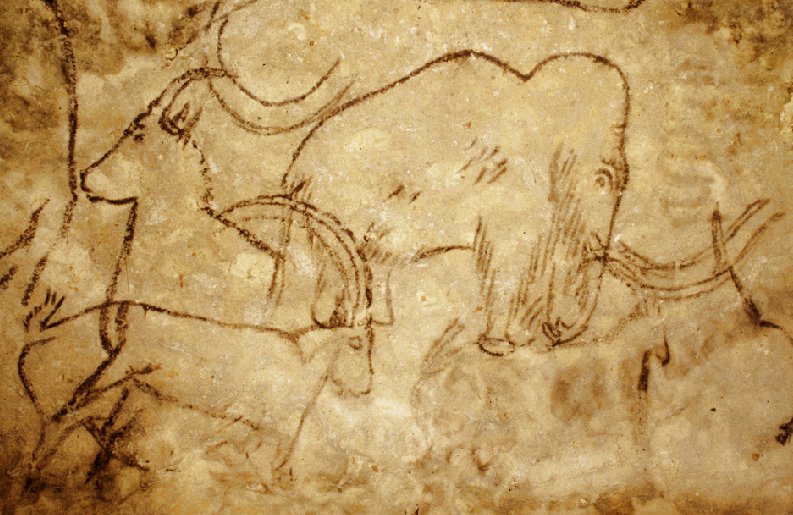
Cave drawings of a mammoth and deer in the Rouffignac cave (CC0)
Padirac Chasm
The Padirac Chasm certainly has the 'wow' factor and deserves to feature on any adventure traveler's bucket list. Located 5 miles from Rocamadour in southwestern France, the beauty of this chasm does not relate to cave art (there is none). It is in the beautiful, turquoise river that flows through the underground cave, which you can enjoy from the comfort of a small boat.
A lift will take you on a descent 338ft below the ground before you start your boat-trip along the subterranean river. A tour of the chasm takes around an hour and a half. You'll see incredible rock formations and see sights with magical names such as the Rain Lake and the Grande Pendeloque, a 200ft high stalactite. You'll dock and continue on foot to the "Salle du Grand Dome", a cavern whose roof rises more than 300ft above visitors.
Tickets for a tour of the Padirac Chasm may be purchased online. It is especially recommended to purchase tickets in advance during the high season, as this is a popular attraction.
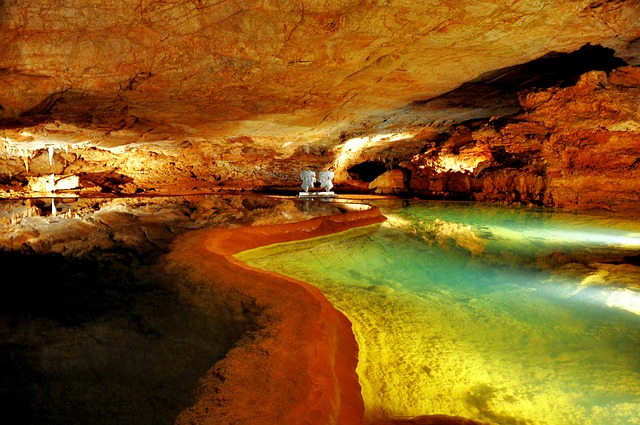
The subterranean lake inside the Padirac cave (Pixabay)
Would you like to visit some of the caves we have mentioned, or find out more about other unique experiences in France we can arrange for our travelers? Contact us and we'll let you know how these caves can be incorporated into one of our self-drive itineraries.
